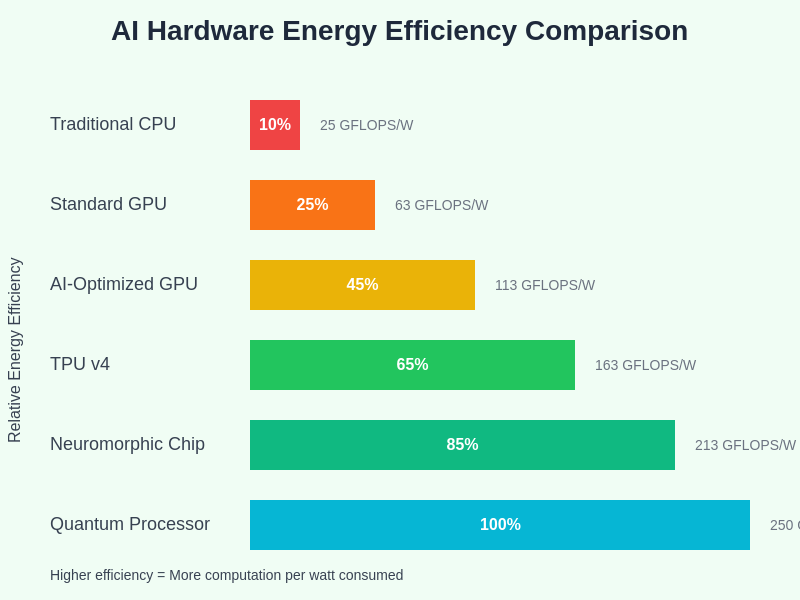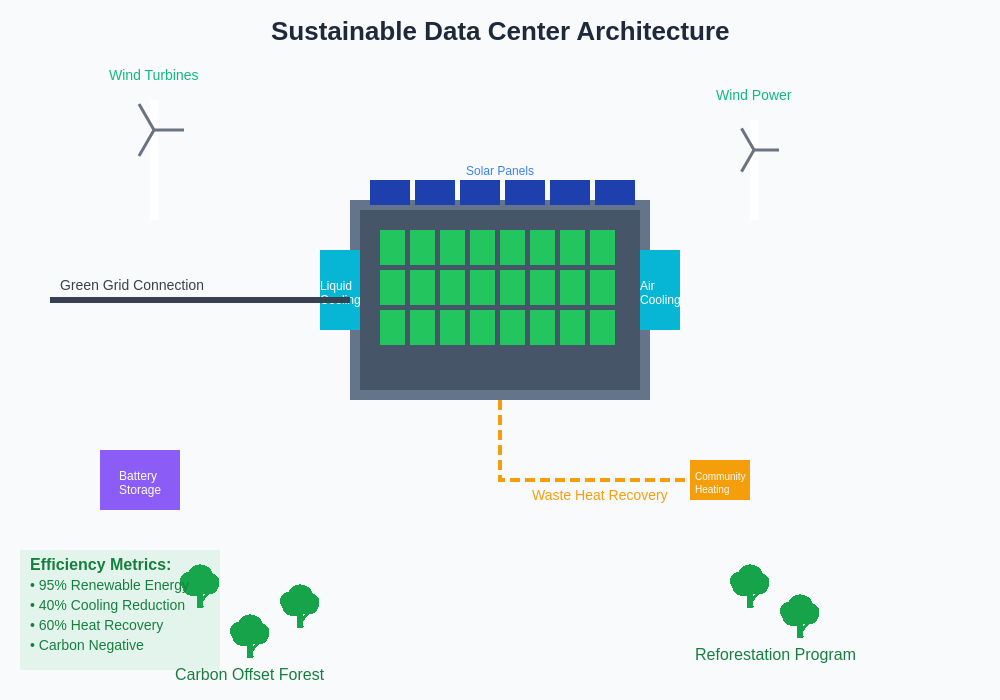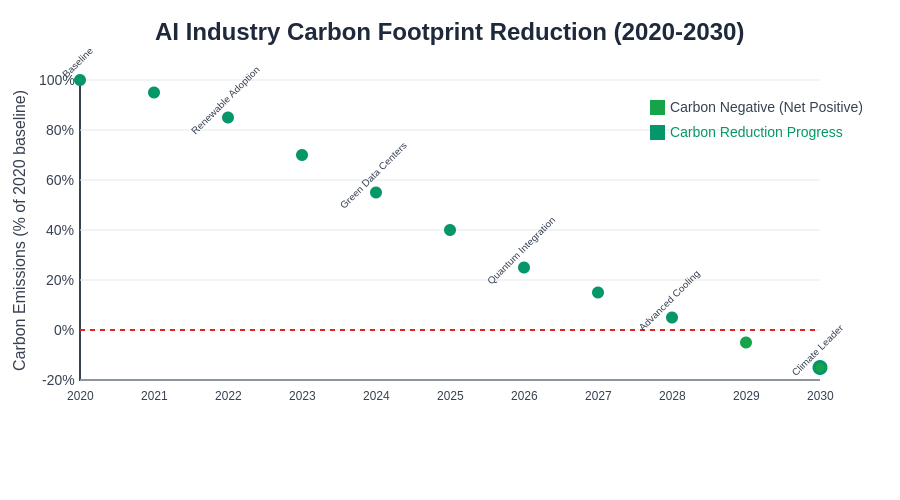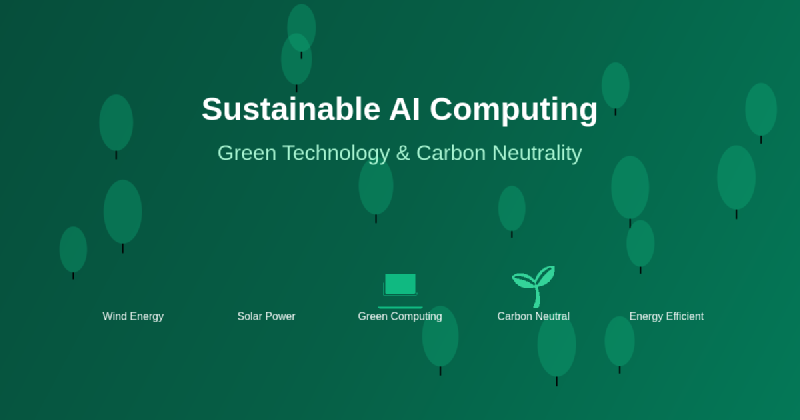The rapid advancement of artificial intelligence technologies has brought unprecedented computational capabilities to our world, but it has also raised critical questions about environmental sustainability and energy consumption. As AI models grow increasingly complex and data centers expand to accommodate growing computational demands, the technology industry faces a pivotal moment where innovation must align with environmental responsibility. The pursuit of sustainable AI computing represents one of the most significant challenges and opportunities of our time, requiring a fundamental reimagining of how we design, deploy, and operate artificial intelligence systems.
Discover the latest sustainable technology trends that are shaping the future of environmentally responsible computing and AI development. The intersection of artificial intelligence and environmental stewardship has become a defining characteristic of modern technological progress, demanding comprehensive solutions that address both computational excellence and ecological preservation.
The Environmental Challenge of AI Computing
The exponential growth of artificial intelligence applications has created an unprecedented demand for computational resources, leading to significant environmental implications that extend far beyond traditional computing paradigms. Modern AI systems, particularly large language models and deep learning networks, require massive amounts of processing power during both training and inference phases, consuming substantial quantities of electricity and generating considerable carbon emissions. The scale of this challenge becomes apparent when considering that training a single large language model can consume as much energy as hundreds of households use in an entire year.
Data centers housing AI infrastructure have become some of the most energy-intensive facilities on the planet, with cooling systems alone accounting for substantial portions of total energy consumption. The proliferation of AI applications across industries has multiplied this effect, creating a cascading environmental impact that extends from individual model training sessions to global energy grid demands. Understanding these challenges represents the first step toward developing meaningful solutions that can support continued AI innovation while minimizing environmental harm.
The carbon footprint of AI computing encompasses not only direct energy consumption but also the embedded carbon costs associated with manufacturing specialized hardware, constructing data center facilities, and maintaining the complex infrastructure required for large-scale AI operations. These considerations have prompted industry leaders to recognize that sustainable AI development requires a holistic approach that addresses every aspect of the computational lifecycle.
Renewable Energy Integration in AI Infrastructure
The transition toward renewable energy sources represents one of the most immediate and impactful strategies for reducing the environmental footprint of AI computing infrastructure. Leading technology companies have made substantial investments in solar, wind, and other renewable energy projects specifically designed to power their data centers and AI training facilities. These initiatives demonstrate that large-scale AI operations can be powered entirely by clean energy sources without compromising computational performance or reliability.
Solar energy integration has proven particularly effective for data centers located in regions with abundant sunlight, where photovoltaic installations can provide consistent, cost-effective power for AI workloads. Wind energy has similarly shown remarkable success in powering computational facilities, with some of the world’s largest tech companies operating massive wind farms dedicated exclusively to supporting their AI and cloud computing operations. The combination of multiple renewable sources creates resilient energy portfolios that can maintain consistent power delivery while minimizing reliance on fossil fuel-based electricity generation.
Explore advanced AI sustainability solutions with Claude to understand how intelligent systems can optimize energy consumption and support environmental goals through sophisticated analysis and recommendations. The integration of renewable energy sources extends beyond simple power procurement to encompass intelligent energy management systems that can dynamically balance computational workloads with available clean energy resources.
The development of on-site renewable energy generation has enabled AI facilities to achieve unprecedented levels of energy independence while dramatically reducing their carbon footprints. These installations often incorporate advanced energy storage systems that can maintain operations during periods of low renewable generation, ensuring consistent computational availability while maximizing the utilization of clean energy sources.
Energy-Efficient Hardware and Architecture Innovation
The development of specialized hardware optimized for AI workloads has emerged as a crucial component of sustainable computing strategies, with manufacturers designing processors and accelerators that deliver superior performance per watt compared to traditional computing architectures. Graphics processing units specifically engineered for machine learning applications have achieved remarkable improvements in energy efficiency, enabling complex AI models to run with significantly reduced power consumption while maintaining or exceeding performance benchmarks.
Neuromorphic computing represents a revolutionary approach to AI hardware design that mimics the energy-efficient operation of biological neural networks, potentially reducing the power requirements of AI systems by orders of magnitude. These innovative architectures process information using event-driven computation principles that activate only when needed, eliminating the constant energy consumption associated with traditional digital processing systems. Early implementations of neuromorphic processors have demonstrated extraordinary energy efficiency improvements while maintaining the computational capabilities required for sophisticated AI applications.
Field-programmable gate arrays and application-specific integrated circuits have been increasingly adopted for AI inference workloads, offering optimized power consumption profiles that can dramatically reduce the energy requirements of deployed AI models. These specialized hardware solutions enable organizations to implement AI capabilities with minimal environmental impact while achieving performance levels that meet demanding real-world application requirements.
The evolution of quantum computing technologies holds immense promise for sustainable AI computing, potentially solving certain classes of optimization problems with exponentially lower energy requirements than classical computing approaches. While quantum systems remain in early stages of development, the potential for revolutionary improvements in computational efficiency per unit of energy consumed represents a transformative opportunity for sustainable AI development.

Modern hardware innovations have achieved remarkable improvements in computational efficiency, with specialized AI processors delivering significantly better performance per watt compared to traditional computing architectures. These advances enable organizations to reduce energy consumption while scaling AI capabilities.
Algorithmic Optimization for Sustainability
Beyond hardware improvements, algorithmic innovations have played a crucial role in reducing the environmental impact of AI systems through more efficient model architectures, training procedures, and inference optimization techniques. Model compression methods, including pruning, quantization, and knowledge distillation, have enabled developers to create AI systems that maintain high performance while requiring substantially fewer computational resources for both training and deployment phases.
Neural architecture search techniques have automated the discovery of energy-efficient model designs that achieve optimal trade-offs between accuracy and computational requirements, enabling the development of AI systems specifically optimized for sustainable operation. These approaches consider energy consumption as a primary optimization objective alongside traditional metrics such as accuracy and inference speed, resulting in models that deliver excellent performance while minimizing environmental impact.
Transfer learning and few-shot learning methodologies have dramatically reduced the computational resources required to develop AI systems for specific applications, enabling organizations to leverage pre-trained models and adapt them to new tasks with minimal additional training. This approach eliminates the need for extensive computational resources that would otherwise be required to train models from scratch, significantly reducing both energy consumption and carbon emissions associated with AI development processes.
Distributed computing frameworks optimized for AI workloads have enabled more efficient utilization of available computational resources, reducing idle time and maximizing the productive use of energy consumed by AI infrastructure. These systems can dynamically balance workloads across available resources, ensuring optimal energy utilization while maintaining performance requirements for demanding AI applications.
Carbon Offset and Neutrality Strategies
Leading organizations in the AI industry have implemented comprehensive carbon offset programs designed to neutralize the environmental impact of their computational operations through investments in environmental restoration projects, renewable energy development, and carbon sequestration initiatives. These programs demonstrate that it is possible to achieve carbon neutrality in AI operations while continuing to advance the state of the art in artificial intelligence research and development.
Direct air capture technologies have emerged as particularly promising carbon offset mechanisms that can permanently remove carbon dioxide from the atmosphere, providing measurable environmental benefits that directly counteract the emissions associated with AI computing operations. Some technology companies have made substantial investments in these technologies, both as offset mechanisms and as long-term solutions for atmospheric carbon reduction.
Reforestation and ecosystem restoration projects funded by AI companies have created measurable environmental benefits while supporting biodiversity conservation and community development in regions around the world. These initiatives demonstrate that sustainable AI development can contribute positively to environmental restoration while advancing technological capabilities.
Access comprehensive sustainability research with Perplexity to stay informed about the latest developments in carbon offset technologies and environmental restoration initiatives that support sustainable AI development. The integration of multiple carbon offset strategies creates robust environmental protection programs that ensure AI development contributes positively to global climate goals.
Green Data Center Design and Operation
The physical infrastructure housing AI systems has undergone revolutionary changes designed to minimize environmental impact through innovative cooling systems, energy-efficient building design, and sustainable construction materials. Modern data centers incorporate advanced cooling technologies that utilize ambient air, geothermal systems, and liquid cooling solutions to dramatically reduce the energy requirements traditionally associated with maintaining optimal operating temperatures for high-performance computing equipment.
Waste heat recovery systems have transformed data centers from pure energy consumers into valuable sources of thermal energy for surrounding communities, with some facilities providing heating for residential areas, industrial processes, and agricultural applications. These innovative approaches demonstrate how AI infrastructure can contribute positively to local energy ecosystems while reducing overall environmental impact.
Water conservation has become a critical focus area for sustainable data center design, with facilities implementing closed-loop cooling systems, rainwater harvesting, and water recycling technologies that minimize consumption of precious freshwater resources. Some of the most advanced facilities achieve remarkable water efficiency ratios while maintaining optimal operating conditions for sensitive AI hardware.
Sustainable construction practices for data center facilities encompass everything from recycled building materials to renewable energy integration during the construction phase, ensuring that environmental considerations are embedded throughout the entire facility lifecycle. These approaches demonstrate that large-scale AI infrastructure can be developed in harmony with environmental protection principles.

Modern sustainable data centers integrate multiple green technologies including renewable energy systems, advanced cooling solutions, waste heat recovery, and water conservation systems to minimize environmental impact while supporting intensive AI workloads.
Edge Computing and Distributed AI for Efficiency
The deployment of AI capabilities at the network edge has emerged as a powerful strategy for reducing both energy consumption and latency in AI applications, enabling computational resources to be positioned closer to end users and data sources rather than requiring all processing to occur in centralized data centers. Edge computing architectures distribute AI workloads across numerous smaller facilities that can be powered by local renewable energy sources and operated with significantly lower cooling requirements than traditional data center configurations.
Mobile and embedded AI processors have achieved remarkable improvements in energy efficiency, enabling sophisticated AI capabilities to operate on battery-powered devices for extended periods while delivering high-quality results for demanding applications. These developments have reduced the need for constant connectivity to remote AI services, decreasing both energy consumption and network traffic associated with AI applications.
Federated learning approaches have enabled AI model training to occur across distributed networks of devices without requiring data to be transmitted to centralized locations, significantly reducing both energy consumption and privacy concerns associated with large-scale AI development. These techniques demonstrate how AI systems can be designed to minimize environmental impact while preserving data privacy and security.
Intelligent workload distribution systems can optimize the placement of AI computations based on real-time availability of renewable energy resources, automatically migrating workloads to facilities powered by clean energy sources and scheduling non-urgent computations during periods of peak renewable generation. This dynamic approach to resource allocation maximizes the utilization of clean energy while ensuring consistent AI service availability.
Industry Standards and Certification Programs
The development of comprehensive sustainability standards for AI computing has provided organizations with clear frameworks for measuring, reporting, and improving their environmental performance while enabling customers and stakeholders to make informed decisions about AI service providers based on environmental criteria. These standards encompass energy efficiency metrics, carbon footprint assessments, and renewable energy utilization requirements that create accountability and transparency in sustainable AI development.
Third-party certification programs have emerged to verify and validate the environmental claims made by AI companies, providing independent assessment of sustainability initiatives and creating trusted benchmarks for comparing the environmental performance of different AI solutions. These certification processes ensure that sustainability commitments are backed by measurable actions and verifiable results.
Lifecycle assessment methodologies specifically designed for AI systems enable comprehensive evaluation of environmental impact from initial hardware manufacturing through end-of-life disposal, providing holistic understanding of the complete environmental footprint associated with AI technologies. These assessments inform design decisions and operational practices that minimize overall environmental impact.
Industry collaboration initiatives have facilitated knowledge sharing and best practice development across the AI ecosystem, enabling smaller organizations to benefit from sustainability innovations developed by larger companies while accelerating the adoption of environmentally responsible practices throughout the industry.
Economic Benefits of Sustainable AI Computing
The financial advantages of sustainable AI computing extend far beyond simple cost savings from reduced energy consumption, encompassing improved operational efficiency, enhanced brand reputation, regulatory compliance benefits, and access to sustainable investment capital that increasingly favors environmentally responsible organizations. Energy-efficient AI systems typically deliver lower total cost of ownership while providing superior performance reliability and reduced maintenance requirements.
Government incentives and regulatory frameworks increasingly favor organizations that demonstrate measurable environmental responsibility, providing tax benefits, grants, and preferential treatment for companies that implement sustainable AI practices. These policy mechanisms create additional financial incentives that support the business case for environmental responsibility in AI development.
Investment capital has increasingly flowed toward organizations that can demonstrate sustainable business practices, with environmental, social, and governance considerations becoming primary factors in funding decisions for AI companies. This trend has created substantial financial advantages for organizations that prioritize sustainability alongside technological innovation.
Operational cost reductions achieved through energy efficiency improvements often exceed the initial investment required to implement sustainable technologies, creating positive return on investment profiles that make environmental responsibility financially attractive independent of other considerations.

The AI industry’s carbon footprint reduction efforts have accelerated significantly, with major companies achieving substantial emissions reductions through renewable energy adoption, efficiency improvements, and innovative cooling technologies.
Future Technologies and Innovations
Emerging technologies promise even greater improvements in sustainable AI computing, with quantum computing, optical processing, and biological computing approaches offering potential solutions that could revolutionize the energy efficiency of artificial intelligence systems. Quantum algorithms designed for machine learning applications could potentially solve certain optimization problems with exponentially lower energy requirements than classical computing approaches.
Optical neural networks that process information using photons rather than electrons offer the potential for dramatic improvements in both processing speed and energy efficiency, with some experimental systems demonstrating the ability to perform complex AI computations using only a fraction of the energy required by traditional electronic processors. These technologies could enable AI systems to operate with minimal environmental impact while achieving unprecedented performance levels.
Biological computing systems that harness the information processing capabilities of living organisms represent an entirely new paradigm for sustainable AI development, potentially offering computational capabilities that operate with the energy efficiency of natural biological systems. While these technologies remain in early research stages, they demonstrate the potential for revolutionary improvements in sustainable computing.
Advanced materials research has produced new types of computing substrates and energy storage systems that could further improve the sustainability profile of AI infrastructure, including superconducting materials that eliminate energy losses and novel battery technologies that enable more effective utilization of renewable energy sources.
Global Impact and Policy Considerations
International cooperation on sustainable AI development has become increasingly important as artificial intelligence technologies cross national boundaries and environmental challenges require coordinated global responses. Policy frameworks that encourage sustainable AI practices while supporting continued innovation have emerged as critical tools for balancing technological advancement with environmental protection.
Developing nations face unique challenges and opportunities in sustainable AI adoption, with the potential to leapfrog traditional computing infrastructure and implement sustainable AI systems from the outset. International development programs increasingly recognize the importance of supporting sustainable technology deployment that can drive economic development without creating additional environmental burdens.
Climate change mitigation strategies increasingly recognize the dual role of AI as both a contributor to energy consumption and a powerful tool for environmental protection, with AI systems being deployed for climate monitoring, renewable energy optimization, and carbon sequestration research. The net environmental impact of AI depends critically on ensuring that beneficial applications outweigh the energy consumption required for AI operations.
Regulatory frameworks are evolving to address the environmental implications of AI development while supporting continued innovation, with some jurisdictions implementing energy efficiency requirements and carbon reporting obligations for large-scale AI operations. These policies create additional incentives for sustainable development while ensuring transparency in environmental impact assessment.
Measuring and Monitoring Environmental Impact
Comprehensive measurement systems for tracking the environmental impact of AI operations have become essential tools for organizations committed to sustainable development, providing detailed insights into energy consumption patterns, carbon emissions, and resource utilization across different types of AI workloads. These monitoring systems enable data-driven decision making that can optimize environmental performance while maintaining computational capabilities.
Real-time energy monitoring technologies allow AI systems to adjust their operational parameters based on current renewable energy availability, automatically scaling computational intensity to match clean energy supply and deferring non-urgent processing to periods of optimal environmental conditions. This dynamic approach to energy management maximizes sustainability while ensuring consistent AI service delivery.
Carbon accounting methodologies specifically designed for AI operations provide standardized approaches for calculating and reporting the environmental impact of different AI applications, enabling organizations to make informed decisions about resource allocation and identify opportunities for improvement. These accounting systems consider both direct energy consumption and indirect environmental impacts throughout the AI system lifecycle.
Predictive analytics applied to energy consumption patterns can optimize AI operations for maximum environmental efficiency, identifying opportunities to reduce energy usage without compromising performance and forecasting future resource requirements to support sustainable capacity planning.
The transformation toward sustainable AI computing represents one of the most significant technological and environmental challenges of our time, requiring unprecedented collaboration between technologists, policymakers, and environmental scientists to develop solutions that enable continued AI advancement while protecting our planet’s climate and ecosystems. The innovations emerging from this challenge demonstrate that environmental responsibility and technological excellence are not competing objectives but complementary goals that drive more efficient, effective, and sustainable technological development.
The future of artificial intelligence depends critically on the industry’s ability to achieve carbon neutrality while continuing to deliver the computational capabilities that drive innovation across countless sectors of human activity. Through renewable energy adoption, hardware efficiency improvements, algorithmic optimization, and comprehensive sustainability strategies, the AI industry is demonstrating that it is possible to build a technological future that supports both human advancement and environmental stewardship.
Disclaimer
This article is for informational purposes only and does not constitute professional advice regarding environmental policy, energy management, or investment decisions. The views expressed are based on current understanding of sustainable computing technologies and their environmental applications. Readers should conduct their own research and consult with qualified professionals when implementing sustainability initiatives. The effectiveness of environmental technologies may vary depending on specific circumstances, regulatory requirements, and implementation approaches.
